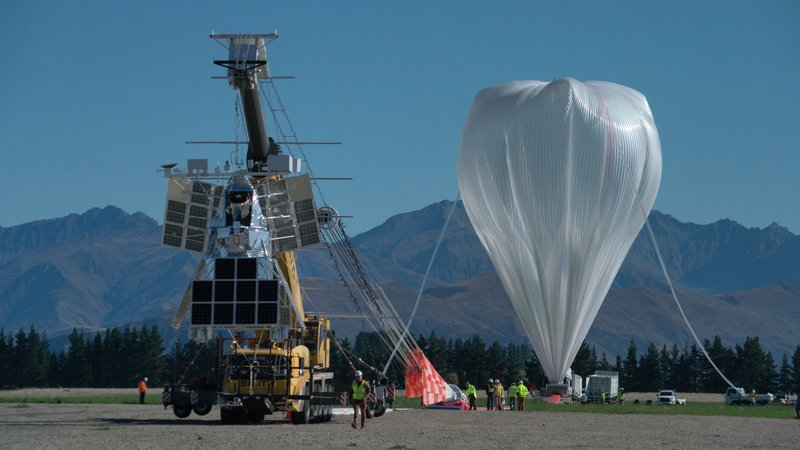GigaBIT, Gigapixel-class Balloon-borne Imaging Telescope will be a three-mirror anastigmat (TMA) system with a 1.34m primary mirror designed to perform wide-field imaging with diffraction limited resolutions in the near ultraviolet (NUV) over a wide field, giving it a resolution of better than 0.1 arcseconds - better than any telescope on Earth, and comparable to that of the Hubble Space Telescope. GigaBIT aims to launch with NASA's Superpressure Balloon in the coming years.
Over the past 50 years, high-resolution astronomical imaging has been immensely consequential for our understanding of the Universe and our place within it. High-resolution imaging is traditionally obtained using multi-billion dollar space-based observatories such as the Hubble Space Telescope (HST), as ground-based imaging suffers from limited resolution due to the refraction of light by the turbulent atmosphere. Such observatories continue to be extremely expensive, severely restricting both who can participate and the science that can be done. This has resulted in an inability to meet the demand for optical to near-ultraviolet (NUV) space-based imaging with existing and planned space missions. GigaBIT aims to address this increasing and overwhelming demand by operating above the Earth’s turbulent atmosphere using NASA’s super-pressure balloon technology, thereby providing unprecedented wide-field high resolution imaging without the prohibitive cost and long development timescales of traditional space missions. GigaBIT will consist of a 1.34 meter telescope with a resolution that is on par with the HST Advanced Camera for Surveys (ACS), but with a field of view that is 82 times larger than the HST ACS. The low cost and repeatability of balloon launches will enable the platform to fly annually to meet the high demand, and the short development timescales ensure that the platform is easily adapted for a variety of science goals while remaining state of the art. Such a platform will help permanently reduce the cost of astronomical observations, improving the accessibility of astronomy to a wider and more diverse range of research groups, thereby enhancing the field's research output.
SuperBIT
The Super-pressure Balloon-borne Imaging Telescope (SuperBIT), GigaBIT's predecessor, was a diffraction limited 0.5m optical-to-near-UV telescope that was designed to study dark matter via cluster weak lensing. SuperBIT launched from Wanaka, New Zealand via NASA’s Superpressure balloon on April 16, 2023 and remained in the stratosphere for 40 days. During the flight, SuperBIT obtained multi-band images for 30 science targets; data analysis to produce shear measurements for each target is ongoing. SuperBIT’s pointing system comprised three nested frames that stablized the entire telescope within 0.34 arcseconds rms, plus a back-end tip-tilt mirror that achieved focal plane image stability of 0.055 arcseconds rms during 300 second exposures.
If you're interested in learning more about SuperBIT, you can visit the following links:
- SuperBIT Website - https://sites.physics.utoronto.ca/bit/
- SuperBIT Wikipedia - https://en.wikipedia.org/wiki/Super-pressure_Balloon-borne_Imaging_Telescope
- NASA SuperBIT Flight Updates - https://blogs.nasa.gov/superpressureballoon/2023/04/20/balloon-borne-superbit-telescope-releases-1st-research-images/
- SuperBIT Flight Overview - Gill et al. 2024 - https://arxiv.org/abs/2408.01847

SuperBIT Documentary
Watch a short documentary on SuperBIT's development at the University of Toronto below!
